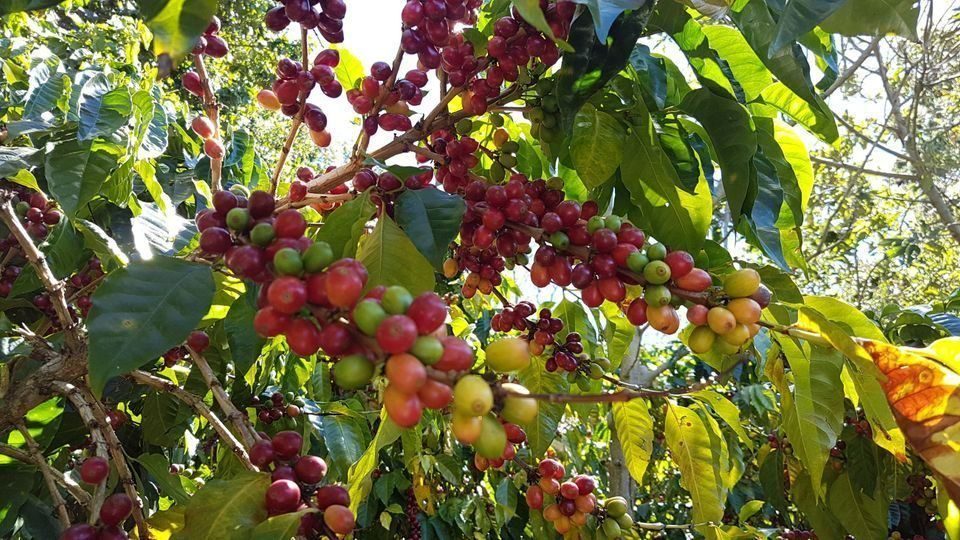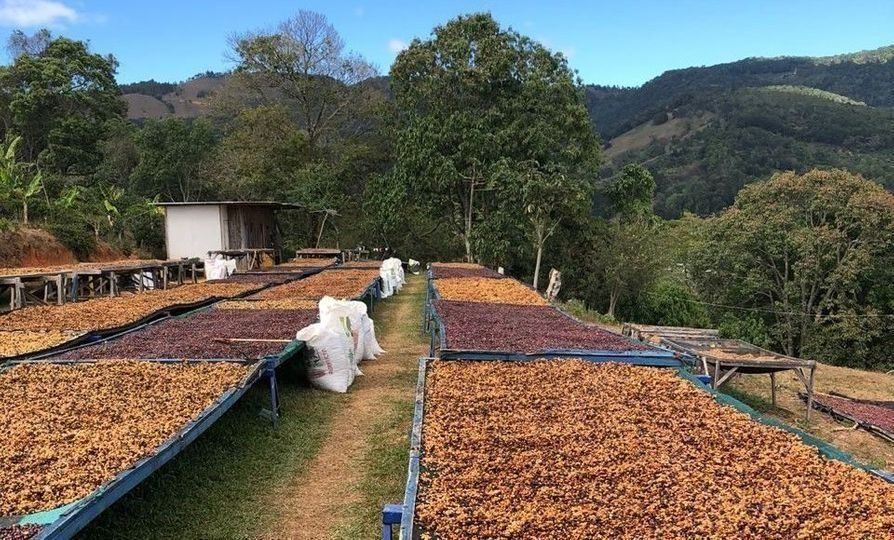From berries to beans
If you've read a bit about coffee botany before, you'll know that coffee beans are the seeds of a coffee berry. After harvesting, the coffee berries go through a refinement process where the skin and pulp are removed so that you are left with the raw coffee bean. This is called processing. The point at which the skin and pulp are removed from the coffee bean varies, and this is the basis for the different methods of processing coffee.
The three most common processing methods for coffee are berry-dried, partially berry-dried and wet-processed. There are also local methods, such as honey processing. How the coffee is processed has an impact on the taste of the coffee. By tasting several types of coffee, you will eventually recognize the differences in typical taste characteristics for the different processing methods.

Local processing method from Costa Rica
Honey processing originated in Costa Rica and is a partially berry-dried coffee. This means that the skin of the ripe coffee berry is removed but the pulp remains around the bean when it dries, as opposed to washing it away (wet processing) or drying the whole berry with the skin on (berry-dried). When the bean is dried with the pulp on, it adds fruitiness and sweetness to the flavor.

The colors of honey processing
The amount of pulp left around the coffee bean during honey processing varies. Sometimes the bean is covered in a thick layer, other times only a small amount is left. Coffee farmers find the amount that best suits their beans. "Honey" refers to the sticky layer of sugar left around the bean that feels like honey.
The processing is divided into colors based on drying time and how much pulp is left around the bean, from least to most: white, yellow, red and black. The darker the color of the bean, the more pulp it has had around it. The more pulp around the bean, the longer it has to dry. The combination of these parameters provides exciting flavor possibilities within the different degrees of honey processing.

The coffee country of Costa Rica
Although honey processing originated in Costa Rica, they also process wet-processed and berry-dried coffee. Costa Rica is a technical coffee country with a strong focus on farmer knowledge. The coffee farms tend to be small, family-run and well managed, where knowledge has been passed down through generations. They often own their own micromills so that the farmers have the opportunity to work with their beans from start to finish. We have good relationships with several coffee farmers in the country through many years of collaboration, and are proud to offer coffee from some of Costa Rica's finest coffee producers.